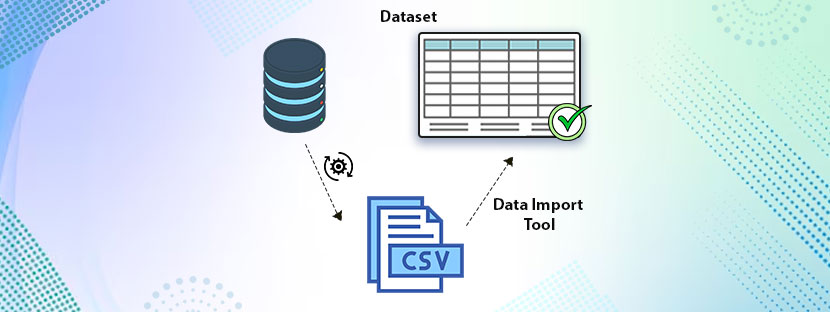Businesses worldwide generate 402.7 million terabytes of data every day, and the number will increase in the coming years. Organizations have already adopted automation across various operating procedures to process their generated data. They realize the benefits of data automation and show interest in adopting it across all channels.
Switching to automation is a genuine need of the hour. Some years ago, companies used to hire skilled people just to enter data from manual records into computer systems. Naturally, it consumed productive business hours. But it was necessary back at that time for companies to keep those data entry experts with them.
However, with time, automation rakes up all the manually daunting tasks and speeds up the data entry tasks. It can bring massive change to organizational operations. Let’s check what other benefits automation can provide in modern work culture in this blog.
Data Automation
Data automation is the process of utilizing technology to collect, process, and manage data without human intervention. It directly eliminates the need for manual efforts to perform all these tasks. Added to that, it performs all data-related work within time. The best part is it minimizes potential human errors and ensures data integrity.
The following benefits of data automation you can realize at your organization if you adopt it cordially.
- Performing record entries or data entry
- Processing and storing data
- Validating data points
- Maintaining consistent data flow
Elements of Data Automation
Automatic data operations typically get completed in three steps. Each of the steps holds significant importance in structuring the database. Let’s have a detailed analysis of them here.
Data Extraction
As the name suggests, it’s the process of extracting data from multiple sources. It includes databases in various domains, social media platforms, APIs, and more such platforms. Interestingly, this process does not take into account collecting only a specific type of data. Rather, it collects any type of data; processed and unprocessed, that too in raw format.
Data Transformation
Data went through several processes including cleaning and restructuring after getting extracted from raw sources. Data transformation is basically the process by which all data goes through. This involves standardizing the formats, mapping the data, and validating all data points.
Data transformation is crucial as it helps turn your raw data into a suitable data format. It helps the data analytics team to study your data further.
Data Loading
Data automation ends with data loading which is storing the data into the targeted destination. The destination could be a data warehouse, physical database, or any cloud storage. Storing the data in the right destination is important so that other data users can use it at pace. Plus, you can deploy various tools and applications to manage your stored data.
Organizational Benefits of Data Automation
In every possible sense, data automation benefits an organization immensely from the core positions. The growing demand for business operation automation is just an example of this. From the earlier levels, the rate of adopting automation has increased over the years. Now, get your idea of automation benefiting your business checked here.

Boundless Scalability
Suppose you hire 10 data entry experts to perform some vital data work. Now you paid them to work overtime to quickly achieve your goals. However, can you again ask them to go beyond their overtime and do some extra work for you? Even if you pay heavily to your data experts, there is a human limitation.
But nothing to worry about when you believe in data automation. You can perform any task at any time via any automated software (preferably AI-enabled). It can provide you with instant results without any failure. It’s completely scalable and rapidly deployable. It means you can easily shoot up the demand and get your results.
Note: even though you believe in data automation software or applications, there’s nothing beyond human excellence. You still need manual data entry solutions to verify your work and ensure compliance.
Make data-driven decisions
Inconsistent data is a barrier to the decision-making process. It happens when you rely too much on the manual data entry process. Humans are skilled data verifiers thus involve them only in quality work. And for your bulk data entry work, you can automate it. Realize the benefits of data automation in making data-driven decisions. You can get updated data insights, optimize your data processing, and most importantly, bring overall success.
Reduce Time
Adopting automation in data processing can significantly benefit you by reducing data processing time. Following up on the ETL, the automated system extracts, processes, and locates data. With the application of heavy software, you can quickly reduce your data processing time to a significant level.
Some Industrial Examples
The benefits of data automation are wide and that’s why it has been quickly adopted by major industries in recent times. Let’s talk about some industrial examples where data automation has become an integral part of their operations.
Banking
Some non-vital or non-financial functions like adding the customer’s name, contact numbers, and bank account details, are now being performed via automated technology. It ensures quick functioning and generates responses on time. Implementing an automated system allows them to gather and collect customer data.
Healthcare
Data automation has true potential in the healthcare system. It’s rapidly taking up space for patient registration, scheduling appointments, processing medical billings, and other major parts. It further improves the overall healthcare information system and improves patient treatment. It helps them to access real-time data. Delivering quality healthcare services to patients is another goal why medical and healthcare service providers are widely adopting automation.
Manufacturing
Procurement, logistics, and inventory – the benefits of data automation are getting realized in each manufacturing process. Manufacturers can track everything in real-time because of data automation. On top of that, it has improved supply chain efficiency and completely reduced stock issues. The adoption rate of automation has sharply increased in manufacturing companies over the years because of its benefits. Manufacturers are utilizing automation to get real-time data and to enhance customer satisfaction based on that.











